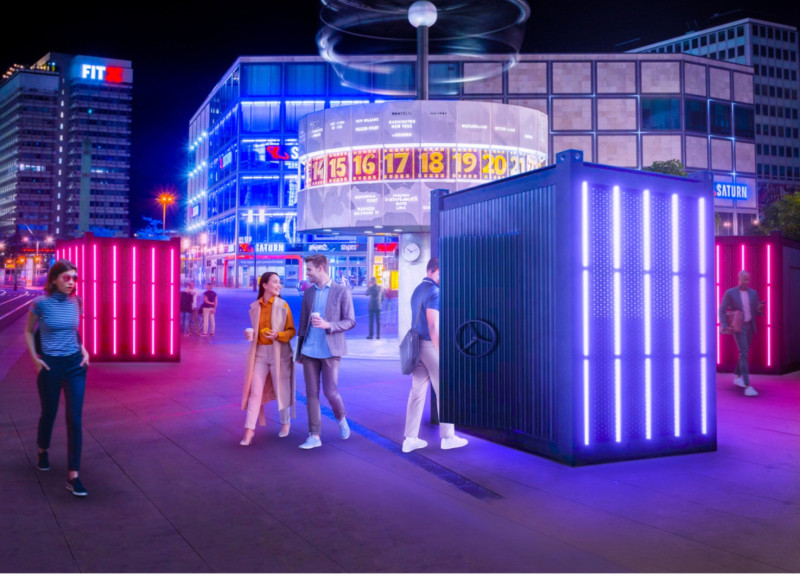5 key facts about this project
"TECHNOBOX" stands out in an energetic setting designed for techno music enthusiasts. The project aims to create an engaging space that brings people together through music and dance while focusing on sustainable practices. By integrating innovative features, the design serves as a cultural venue that encourages user interaction while promoting eco-friendly energy generation.
Architectural Concept
At the heart of the design is a kinetic energy floor that captures energy produced by people as they dance. This creative element connects fun and sustainability, allowing attendees to actively contribute to the energy needs of the venue. The approach highlights the importance of participation in environmental efforts, transforming an ordinary experience into one that is both enjoyable and responsible.
Materials and Aesthetic
Recycled metal is primarily used in the structure and facade, giving the space a rugged appearance. This material choice not only emphasizes strength but also reflects a commitment to sustainability through reuse. The inclusion of sound insulation in different parts of the building enhances the comfort of users while creating an environment suitable for loud music parties.
Lighting and Interaction
LED lights are a key feature, illuminating the facade and enhancing the overall atmosphere of the venue. These lights create a lively setting while also providing a chance for interaction with the surrounding area. Thick mirror glass and perforated metal sheets are used to play with light and shadow, making the exterior visually appealing and inviting for those nearby.
Details and Features
Details in the design add to the character of the space. The entrance, clad in corrugated aluminum sheets, serves practical purposes while also offering visual interest. This thoughtful design approach creates a cohesive experience, where every feature is intended to improve user enjoyment and deepen the connection between the venue and its vibrant cultural environment.



















































